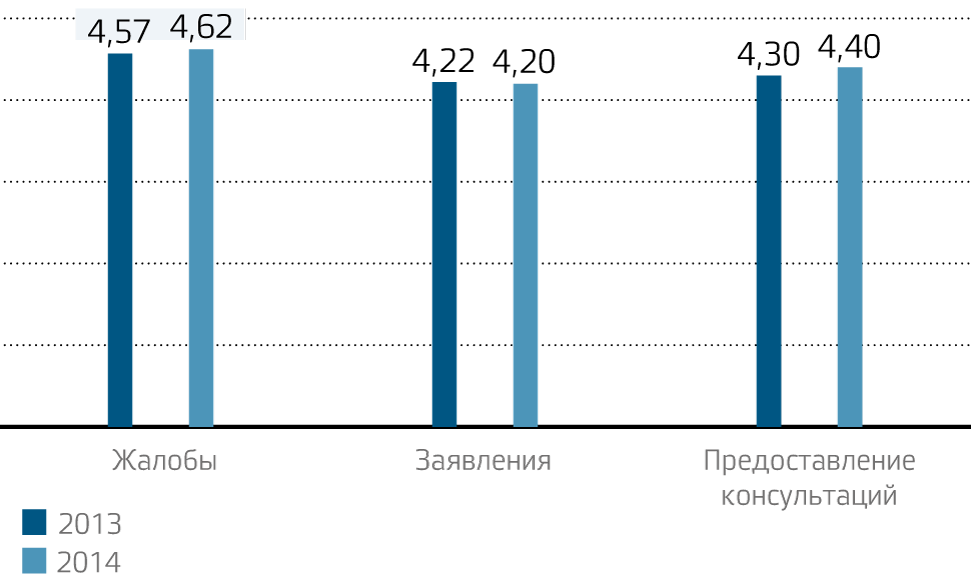IDGC of Centre controls over customer satisfaction with the quality of services and plans for further development of customer service. Principles of evaluation are outlined in Customer Satisfaction Evaluation, Requirements and Expectations MI BP 09/01–01/2012 approved by Order of IDGC of Centre dated September 12, 2012 No. CA–23/162-r. Level of customer satisfaction with services is evaluated basing on:
- customer opinion after processing customer request;
- questionnaires in the customer service offices;
- on-line questionnaires (via the Internet);
- periodic questionnaire programmes (via post and telephone calls to customers).
According to the results of the survey and analysis of the received calls the quality of customer service is evaluated in order to create measures to improve the services provided.
In case of a negative opinion or a piece of advice of the customer in relation to services provided by the Company, the task to address the shortcomings is initiated.
Below are some results of the survey conducted in
Estimating on a 5 point scale the level of customer satisfaction, the following results are presented on the graphs:
In 2014, customer satisfaction regarding claim settlement and consultancy increased.
Общая оценка удовлетворенности потребителей по вопросам рассмотрения обращений остается высокой и составляет 4,6 балла.
На основании анализа результатов проведенных опросов в 2015 г. МРСК Центра планирует:
Total customer satisfaction regarding claim settlement remains high (4.6 points).
Following the results of questionnaires in 2015, IDGC of Centre is planning to:
- change in procedure of handling customer requests in order to provide full scope of information important for customer while processing request;
- initiate sms-information on handling requests for grid connection, as well as informing population on planned and emergency repairs following power cuts or replacement of metering equipment.



